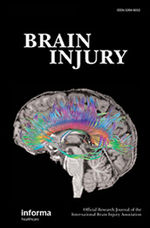Abstract
Background: Sideline diagnostic tests for concussion are vulnerable to volitional poor performance (“sandbagging”) on baseline assessments, motivated by desire to subvert concussion detection and potential removal from play. We investigated eye movements during sandbagging versus best effort on the King-Devick (KD) test, a rapid automatized naming (RAN) task.
Methods: Participants performed KD testing during oculography following instructions to sandbag or give best effort.
Results: Twenty healthy participants without concussion history were included (mean age 27 ± 8 years). Sandbagging resulted in longer test times (89.6 ± 39.2 s vs 48.2 ± 8.5 s, p < .001), longer inter-saccadic intervals (459.5 ± 125.4 ms vs 311.2 ± 79.1 ms, p < .001) and greater numbers of saccades (171.4 ± 47 vs 138 ± 24.2, p < .001) and reverse saccades (wrong direction for reading) (21.2% vs 11.3%, p < .001). Sandbagging was detectable using a logistic model with KD times as the only predictor, though more robustly detectable using eye movement metrics. Conclusions: KD sandbagging results in eye movement differences that are detectable by eye movement recordings and suggest an invalid test score. Objective eye movement recording during the KD test shows promise for distinguishing between best effort and post-injury performance, as well as for identifying sandbagging red flags.

